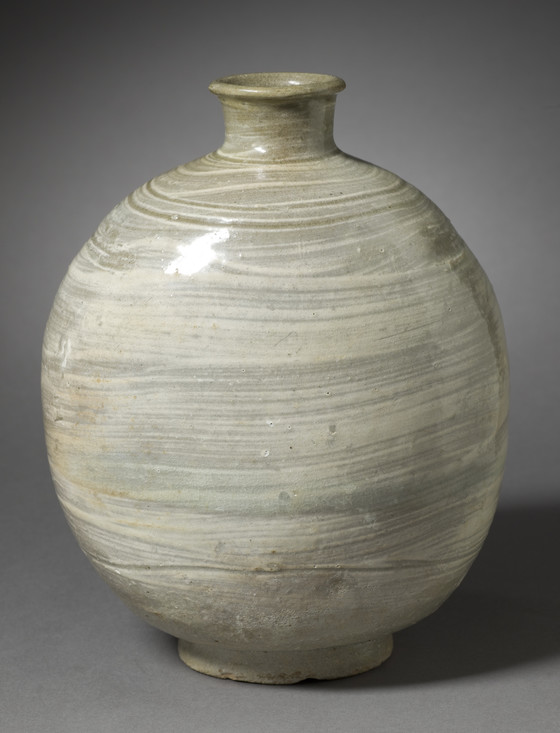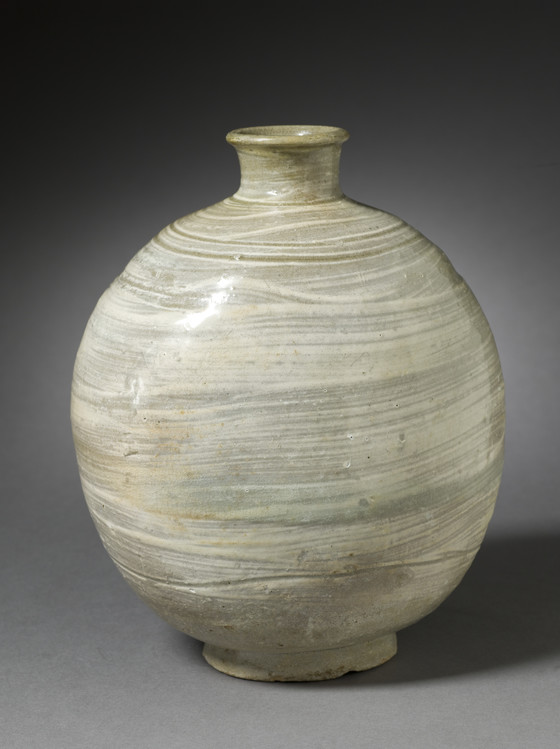Flask with Brushstroke Marks



Please log in to add this item to your gallery.
View comments
No comments have been posted yet.
Add a comment
Please log in to add comments.
Please log in to add tags.
* Nearly 20,000 images of artworks the museum believes to be in the public domain are available to download on this site.
Other images may be protected by copyright and other intellectual property rights.
By using any of these images you agree to LACMA's Terms of Use.
Flask with Brushstroke Marks
Korea, Joseon dynasty (1392-1910), 15th-16th century
Furnishings; Serviceware
Buncheong ware; Wheel-thrown stoneware with brushed slip decoration and pale green glaze
Height: 9 in. (22.86 cm); Diameter: 7 5/8 in. (19.37 cm)
Purchased with funds provided by an anonymous donor (M.2009.13)
Not currently on public view


